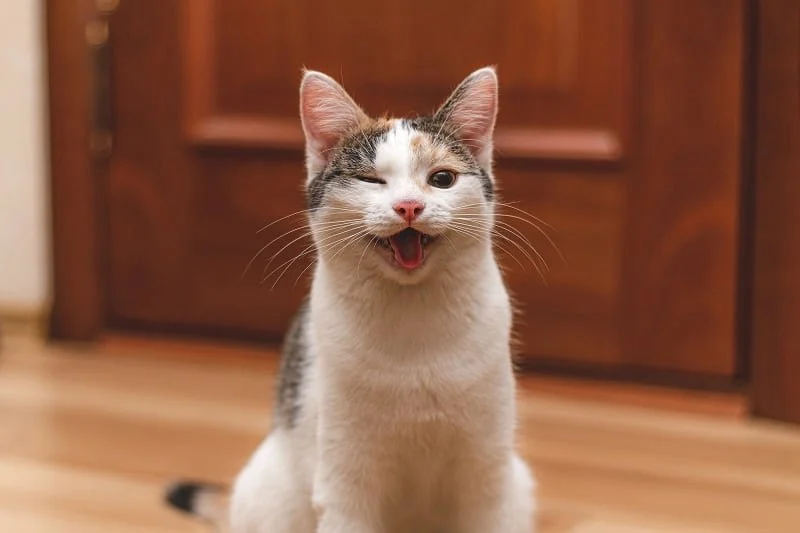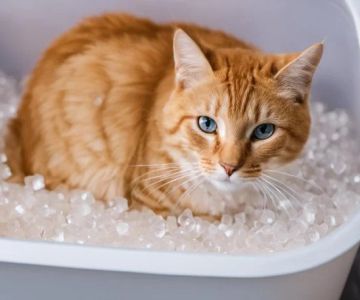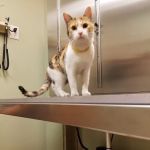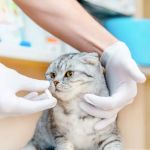
- 1. Understanding Cat Behavior: Why Cats Wink
- 2. The Meaning Behind Your Cat’s Wink
- 3. Winking vs. Squinting: What’s the Difference?
- 4. How to Respond to Your Cat’s Winks
- 5. Other Cat Behaviors to Look Out For
1. Understanding Cat Behavior: Why Cats Wink
As a cat owner, you've probably noticed your feline friend winking at you. But what does it mean when your cat winks? While it may seem like a simple gesture, winking is a subtle form of communication in the world of cats. Understanding this behavior can help deepen your bond with your pet and enhance your ability to read their emotional state.
In the animal kingdom, communication is key, and cats use a variety of signals to express themselves. Winking is just one of many actions that your cat uses to convey how they feel or react to a situation. To interpret this behavior correctly, it's important to observe the context in which the wink occurs.
2. The Meaning Behind Your Cat’s Wink
A cat's wink is often a sign of trust and affection. When your cat winks at you, it can be a way of showing that they feel safe and comfortable in your presence. This gesture is similar to a human "blink of trust," where they close their eyes for a brief moment to show they are not threatened.
Winking can also be a way for cats to signal relaxation. If your cat is content, resting, or in a calm mood, you may see them wink as a way of indicating that they feel comfortable and at ease. In this case, the wink is less about communication and more about expressing their overall well-being.
3. Winking vs. Squinting: What’s the Difference?
While winking is often a friendly and positive gesture, squinting can sometimes indicate a different set of emotions. Cats may squint if they are feeling irritated, uncomfortable, or even unwell. A squint is often a sign that something may be bothering them, whether it’s an environmental factor or an issue with their health.
It’s important to distinguish between winking and squinting to understand what your cat is trying to communicate. A wink is a deliberate action, often involving a slow, purposeful closing of the eye, while squinting can be more involuntary and associated with a sense of discomfort. If you notice your cat consistently squinting, it’s worth checking their eyes for any signs of irritation or seeking advice from your veterinarian.
4. How to Respond to Your Cat’s Winks
If your cat winks at you, it's a sign of affection and trust. A good response is to offer gentle eye contact and perhaps a soft petting session. Responding to your cat's wink with a calm, soothing presence can strengthen the bond between you and your furry companion. Cats appreciate calmness, and your relaxed demeanor can reinforce their sense of safety.
Additionally, you can mirror your cat’s behavior by blinking slowly at them. This slow blink is often interpreted by cats as a sign of friendship, similar to a wink. It’s a way to communicate that you are not a threat and that you share a peaceful, trusting connection.
5. Other Cat Behaviors to Look Out For
While winking is a lovely and subtle form of communication, there are other cat behaviors that can give you insight into your pet's mood and needs. For example:
- Tail Position: A cat's tail can tell you a lot about how they are feeling. A raised tail often signals confidence or excitement, while a tucked tail can indicate fear or submission.
- Purring: Purring is commonly associated with contentment, but cats also purr when they are in pain or feeling anxious. It’s important to pay attention to the context of the purring.
- Ear Movement: The position of a cat's ears can indicate whether they are curious, relaxed, or agitated. Forward-facing ears are a sign of interest, while flattened ears suggest discomfort or anger.
In conclusion, understanding your cat’s behavior, including winking, helps build a stronger connection and allows you to better care for their emotional and physical needs. If you notice other unusual behaviors alongside winking, it might be helpful to consult with a veterinarian to rule out any health issues. For further insights into your cat's health and behavior, visit Omnia Pet for expert advice and resources.









 Rancho West Animal Hospital4.0 (169 reviews)
Rancho West Animal Hospital4.0 (169 reviews) Petco4.0 (1172 reviews)
Petco4.0 (1172 reviews) Rocky Point Animal Hospital4.0 (367 reviews)
Rocky Point Animal Hospital4.0 (367 reviews) Petco4.0 (1031 reviews)
Petco4.0 (1031 reviews) Village Animal Hospital4.0 (145 reviews)
Village Animal Hospital4.0 (145 reviews) Furry Babies Aurora4.0 (672 reviews)
Furry Babies Aurora4.0 (672 reviews) How to Stop Your Kitten from Eating Litter Crystals: Essential Tips for Pet Owners
How to Stop Your Kitten from Eating Litter Crystals: Essential Tips for Pet Owners Understanding Hyperthyroidism in Cats: Treatment Options and Diet
Understanding Hyperthyroidism in Cats: Treatment Options and Diet Understanding Feline Anemia: Causes, Symptoms, and Treatment
Understanding Feline Anemia: Causes, Symptoms, and Treatment The Best Calming Pheromone Diffusers for Anxious Cats
The Best Calming Pheromone Diffusers for Anxious Cats How to Help a Kitten with a Broken Tail
How to Help a Kitten with a Broken Tail How Dogs Understand Human Language: The Science of Canine Cognition
How Dogs Understand Human Language: The Science of Canine Cognition